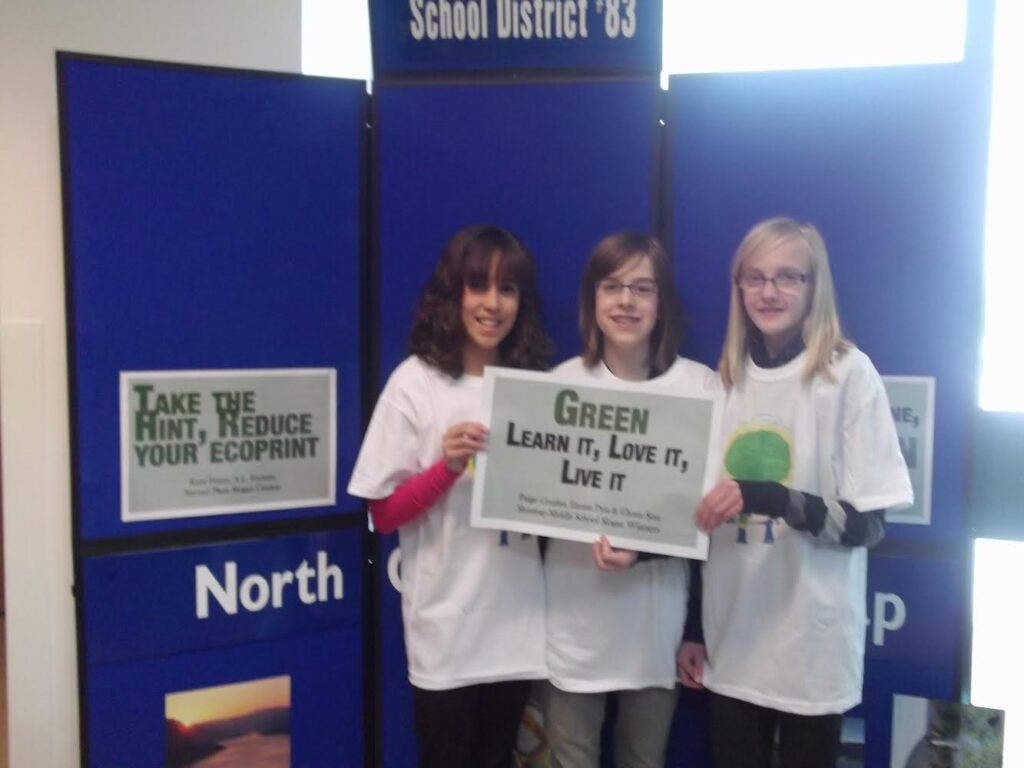Category A: Courses in Environmental Sustainability
High – 5 Points
HLSC 2550: Intro to Pathophysiology
HLSC 2650: Health Science 4: Pathophysiology
HLSC 3550: Health Science 5: Advanced Pathophysiology
Pathophysiology is related to environmental sustainability in a variety of avenues. For example, by learning about the pathophysiology of chronic illnesses such as COPD, asthma, cardiovascular disease I am able to educate my clients on the ways that some of these illness can be exacerbated and/or triggered by environmental conditions such as as air quality, by toxic pollutants such as smoking or molds, or by dietary habits which may impact the client’s lifestyle choices that in result also impact their negative contributions to the environment (ie. reducing their carbon footprint to improve air quality, eating less processed foods which inevitably come from manufacturers who contribute to greenhouse gases).
Pathophysiology assists researchers and scientists in understandings, tracking and tracing patterns of epidemiology in order to best combat disease that poses threat to living things. It is because of pathophysiology that we are able to predict and treat many deathly illnesses that have come and gone through this world, which has ultimately impacted ecosystems on an international level.
Additionally, by learning about pathophysiology by taking the above courses I am able to become a nurse who ultimately cares for individuals’ medical conditions in order to support them in their ability to function as active members of society who thrive, who empower and who lead by example.
NURS/HLSC 3830: Global Health Perspectives
By taking a course on global health perspectives, I have gained a deeper understanding and appreciation for the ways that environments, illnesses, pandemics and social determinants of health impact the health of individuals and communities on an international level. As a nurse who advocates for environmental protection, illness prevention and social justice to support vulnerable individuals on a global level, I am indirectly also advocating for improved environmental sustainability.
NURS 3500: Health 4: Health/Community Development
NURS 3500 emphasizes the importance of working alongside communities as a healthcare provider which includes understanding social determinants of health which impact our target populations. One social determinants of health which impacts a large majority of our population is their living environment. In understanding my clients’ living environment I need to understand how environmental sustainability and lack thereof can influence their health, and the ways in which they live. As touched on in a previous description, I must also be able to understand epidemiology and illnesses or diseases that my clients are predisposed to in order to best educate, protect and support my clients.
Category B: Community or TRU Volunteer Work
High – 5 Points: 30 hours
TRU UNICEF Club:
As an invested volunteer I am highly involved in all aspects of the club including but not limited to onboarding/recruiting, planning, fundraising, community outreach, managing funds and events. Due to the COVID-19 Pandemic, many of our original plans for events have needed to be altered to adhere to Health and Safety Guidelines, but we have still found many ways to fundraise for the club.
An example of one our most successful fundraisers this past year:
Our annual Flowergram Fundraiser for Valentines day which required planning, creating a website portal for purchasing, networking with local flower shops for donations, creating the flowergrams for each purchase, delivering the flowers to local individuals, and of course donating our proceeds to UNICEF to purchase survival kits. UNICEF’s survival kits are tangible, lifesaving items delivered to high-need children in families internationally. These said gifts provide children with healthcare, clean water, nutrition and education to list a few in order to support them to not only survive, but thrive as functioning members of society.
Category D: Environmental or Social Organizations
High – 5 Points: Executive Member
TRU UNICEF Co-Founder and Vice President:
Co-founded by a colleague and myself, the TRU UNICEF Club was established in the Fall of 2020. Our TRU UNICEF club is grounded in the belief that by taking proactive steps we can help to address issues related to the well-being of children both locally and overseas through community advocacy and empowerment. UNICEF is a non-for-profit organization proud to uphold environmentally sustainable values in order to reduce both greenhouse gas emissions and it’s environmental impact in attempt to combat climate change. Climate change ultimately impacts universal temperatures, natural disasters and disease which threatens the health and safety of our target population of vulnerable children.
Category E: Extra-Curricular Knowledge Sharing
Medium – 3 Points: Presenting 1 Event
SD83 Green Campaign – “Green – Learn it, Love it, Live it”:
Myself and two of my peers in the public school system created a Green Slogan for our school district’s Green Campaign Contest. We won the contest, and as a result, our slogan became the Green Slogan distributed amongst all of SD #83, and not only were we recognized in a school assembly, but also presented our Green Slogan in front of our school district leaders and visitors at a school district-wide conference regarding environmental sustainability. Our slogan encourages a commitment to understanding sustainability, modeling green stewardship, and implementing environmentally friendly actions and behaviors in the school district and the Shuswap community.
Low – 1 Point (x2): Attending Events
On The Land Experience at Pipsel Lake (NURS 1730):
In 2018, my NURS 1730 class visited an on the land experience at Pipsel Lake organized by a local Indigenous adult, Ed. Ed educated our class about a variety of Indigenous cultural perspectives on environmental impact and preservation, as a form of sustainability. While at Pipsel Lake I really felt the passion that the Secwepemc people have towards the land in that area, and how sacred it is to their people. I think that it is very admirable that that they are so protective of the land because of what it means to them. Ed very clearly expressed his emotions towards the AJAX mine and what the outcomes of that mine would mean for the land. He even shared with our group that the Indigenous people fighting for the land turned down a $500 million compensation offer from the AJAX company; That is commitment. The commitment that my culture has for their traditions, their land, and the protection of all living things is surreal, and I think that is so important.
Me to We Conference (Vancouver 2011):
Students of School District #83 were required to submit applications to attend a Me to We conference held in Vancouver. These applications needed to express why each student was personally interested and invested in global, social and environmental sustainability and support. As a selected applicant to attend the said conference, I went on a 2-day educational trip of which I was surrounded by like-minded peers, networked and was educated by world leaders and role models on topics regarding human rights, environmental impact and how we can influence change, particularly in impoverished or high-need communities.
Category F: Environmental Sustainability Course Related Work
Low – 1 Point (x5): Create or write a paper, poster, or project for a class
Two of the attached assignments, one of which is regarding chronic obstructive pulmonary disease (COPD), and the other of which illustrates chronic renal failure (CRF) are pathoflow diagrams illustrating the pathophysiology of these severe health conditions including how they are triggered and how they impact the human bodies ability to sustain itself. The body’s ability to adapt and respond to environmental factors is not only impressive, but also detrimental to one’s ability to survive. While smoking is a preventable environmental trigger for COPD, some illnesses such as CRF have triggers less easily preventable including diabetes.
Diabetes, substance use disorders, tuberculosis and homelessness all have something in common when referring to predisposition: low socioeconomic status, an internationally recognized social determinant of health. The assignments attached below which I completed in my educational degree have touched on these illnesses or health concerns; all of which can be assessed using an environmentally sustainable lens. Often times, individuals who are classified as having lower socioeconomic status do not have the capacity to break out of this classification in order to improve their health and wellbeing, creating a vicious cycle being passed along throughout generations.
For example, individuals are are exposed to harsh conditions such as environmental impacts of global warming, have little to no capacity or supports to break out of homelessness and therefore endure extended period of time in the harsh cold, or extreme heat, eventually leading to hospitalization, using hospital resources which may come from large manufacturing facilities which contribute to greenhouse gases. If not hospitalized, perhaps they are lucky enough to seek help in a shelter where they are crammed into a small, shared facility with others where disease and illness such as tuberculosis is passed around, which leads to the shelter being shut down by health and safety using pathophysiological testing and screening mechanisms and then forces these individuals to go back to the streets. On the streets these individuals may develop feelings of hopelessness, isolated and depression leading them to use and become addicted to substances. If an individual with substance addictions becomes pregnant, they often do not have the capacity to seek and receive the support they need to get clean, and therefore they use substances while pregnant, endangering the fetus, which then causes the mother to lose custody of the child after birth placing the child in the system. And so on, and so forth.
Environmental sustainability is a broad definition that covers many aspects of environments, not only vegetation’s. It covers topics impacting living conditions, pathophysiology, atmospheric conditions and epidemiology, all of which have been covered in many nursing courses, and therefore ultimately displayed in a plethora of my nursing projects and/or assignments.

